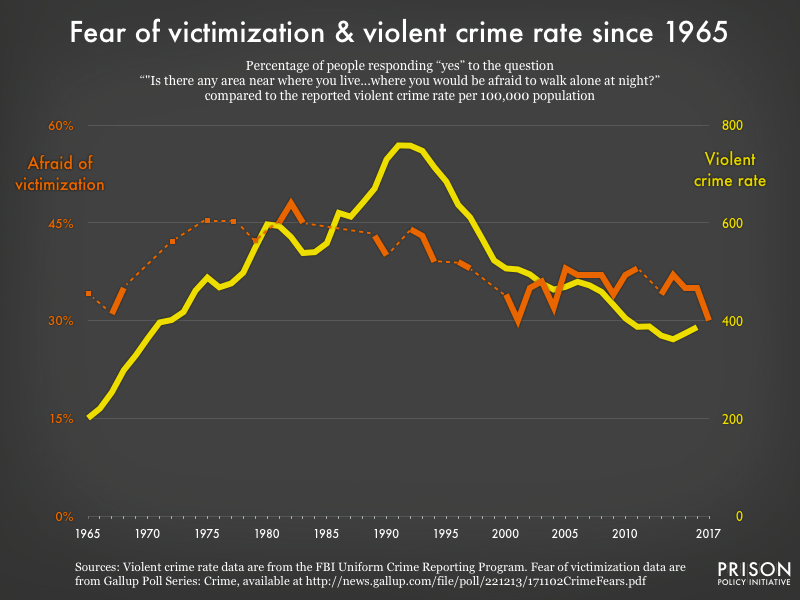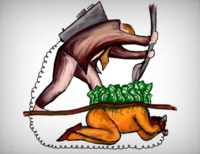Actual violent crime has nothing to do with our fear of violent crime
Comparing violent crime rates to public opinion data shows that there's a long-standing disconnect between perception and reality.
by Emily Widra, May 3, 2018
I updated a graph from our 2003 book The Prison Index to answer the question: How closely does Americans’ fear of violent crime reflect the actual violent crime rate?
The answer: Hardly at all.
Beginning in 1965, Gallup began asking Americans if there was “any area near where you live…where you would be afraid to walk alone at night?” Over time, these poll results show a tenuous relationship, at best, between the violent crime rate and the number of people who report being afraid:
 The violent crime rate (yellow) peaked in 1991. The fear of crime (orange) peaked nine years earlier and was already declining when the violent crime rate was approaching its peak.
The violent crime rate (yellow) peaked in 1991. The fear of crime (orange) peaked nine years earlier and was already declining when the violent crime rate was approaching its peak.
Of course, this data isn’t sensitive to regional and economic variations in crime across the country. And people who aren’t afraid of being attacked might be afraid to walk around at night for other reasons.
But it’s interesting to explore the discrepancy between perception and reality. From the early 1980s to the early 1990s, as violent crime reached historic heights, Americans’ fear of victimization fell.
This isn’t to say that Americans are grossly out of touch. But it should remind elected officials and media that the last place to look for evidence of a crime wave is in public opinion polls.



